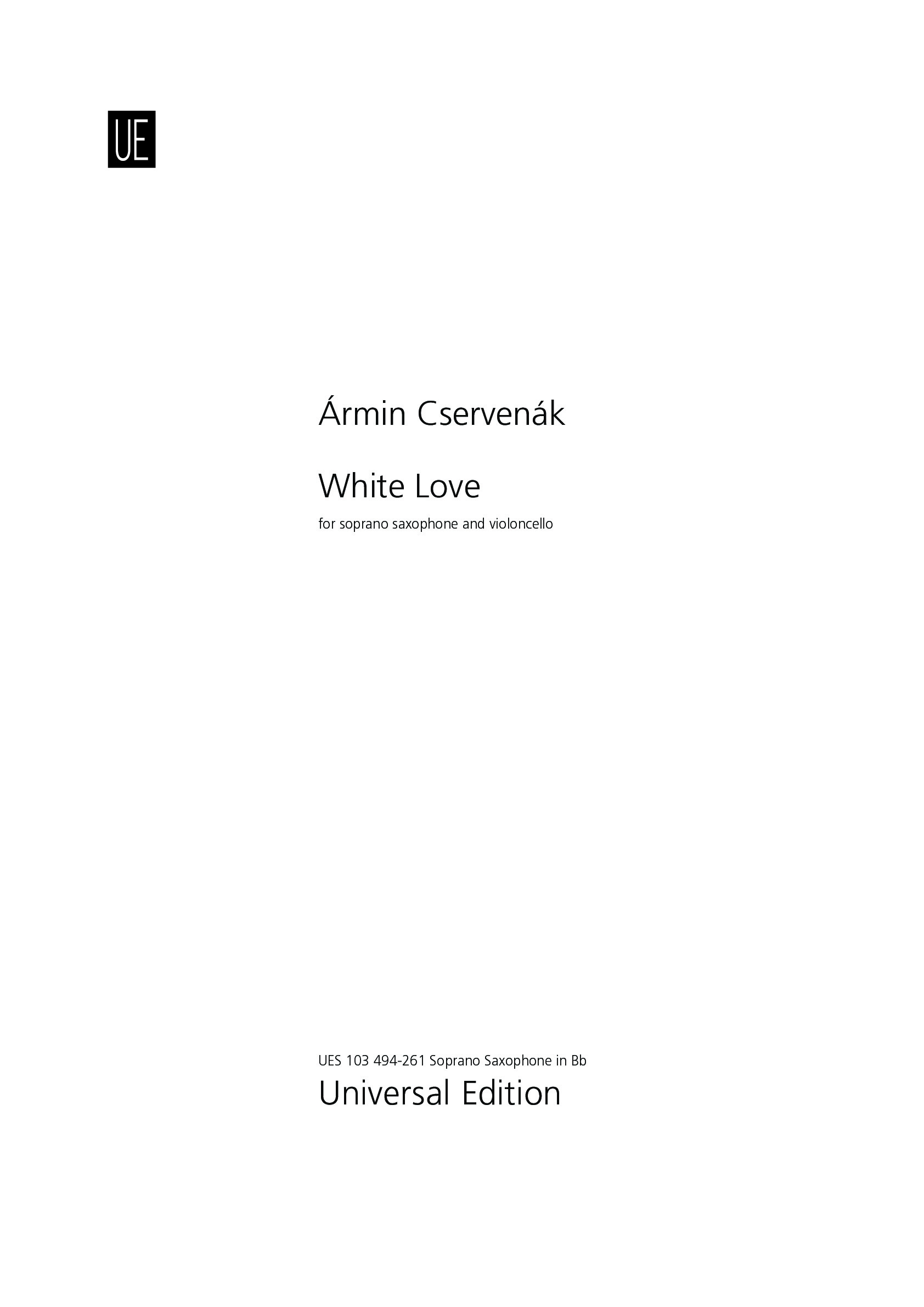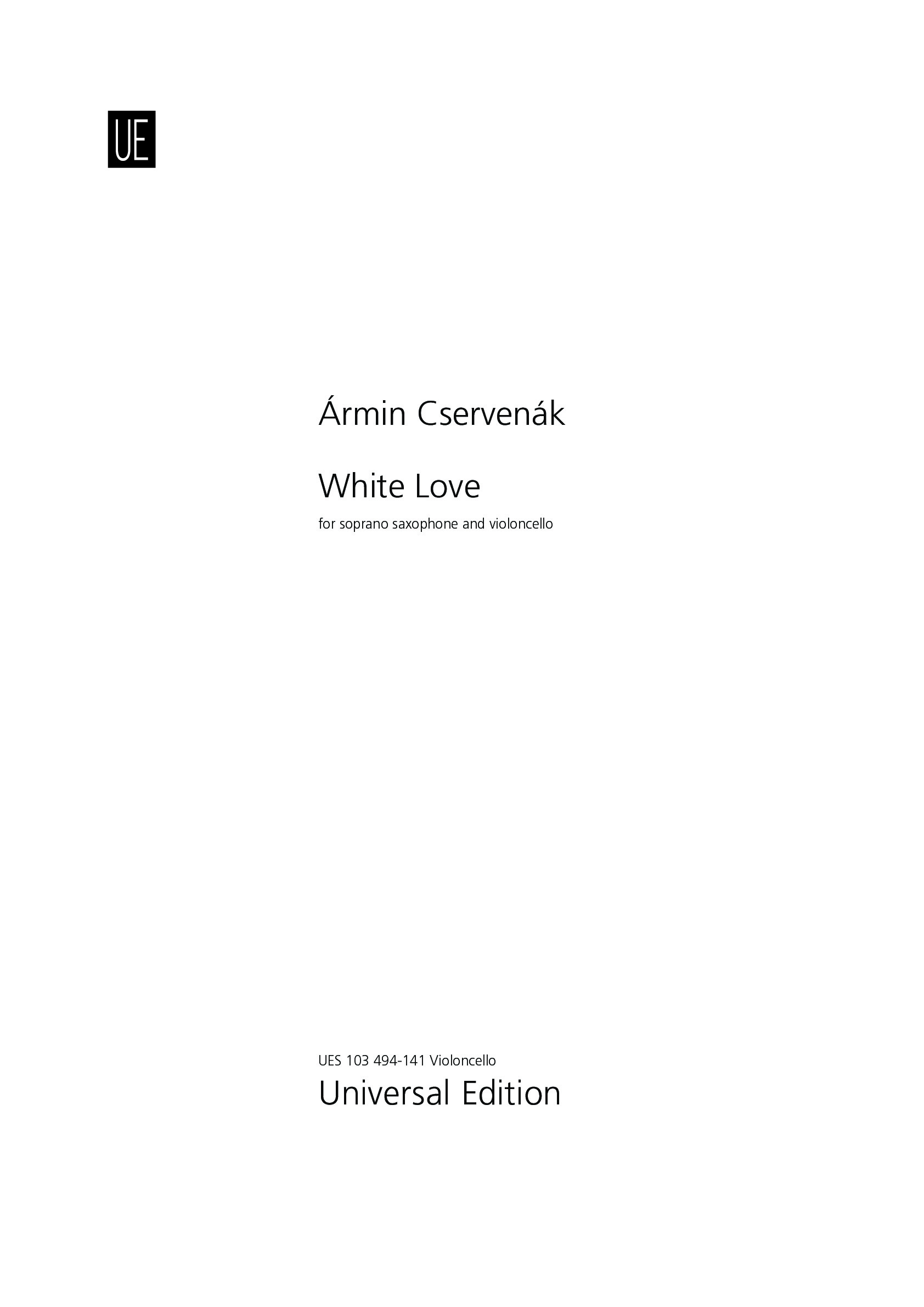

Ármin Cservenák
White Love
Duration: 15'
Instrumentation details:
soprano saxophone in Bb
violoncello
White Love
Translation, reprints and more



Ármin Cservenák
White LoveOrchestration: for soprano saxophone and violoncello
Type: Dirigierpartitur
Sample pages
Work introduction
White is the brightest colour and has no hues. White is the equal mixture of the three primary colours. The white colour can be associated with peace, purity, brightness, (new) beginning, etc. In most cultures, the white colour has a positive symbology.
For me, white means coldness, emptiness, spacelessness, and fear, a space where everything dissolves and disappears. These thoughts associated with the white colour make me emotionally ambiguous. Sometimes I feel that the white colour terminates and neutralises everything. Being in other moods, I think white transforms and unites everything into its primary and purest existing state. These impressions led me to project the symbolic meanings of white colour to the deepest human relationship, love.
“White Love” was initially composed for a dance theatre project choreographed by Staša Zurovac. The conception of the project was based on Jon Fosse’s hallucinatory prose “Aliss at the Fire” (2003).
Fosse’s text begins in March 2002 and returns to a dark, late November Tuesday afternoon in 1979 when Signe is looking out the window at the storm as she waits for her husband, Asle, who has left with his rowboat and never returned. Aliss's everyday life is interwoven with the fluid change of persons around her home. As the narrative expands over time, Aliss's hallucinatory memories go back further and further in time to a gloomy November afternoon, when Asle's great-great-grandmother Aliss and her two-year-old son Kristoffer appear at a bonfire on the bay. As if a premonition of the central tragedy, Kristoffer falls into the water and is rescued by Aliss, and later Kristoffer's son, Aliss’s grandson Asle, whom he was named after, drowned in the bay while playing with the rowboat he was given as a present by his parents on his seventh birthday on November 17, 1897. Aliss's hallucinations, diffused in time, all carry the burden of tragedies affecting generations. The narrative constantly leaps through space and time, always returning to the tragedy of Aliss.
“she thinks, if only spring would come now, with its light, with warmer days, with little flowers in the meadows, with trees putting out buds, and leaves, because this darkness, this endless darkness all the time now, she can’t stand it...”
The whole atmosphere of the text is obscure, the only motif that illuminates is fire. The title of my piece “White Love” is a counterpoint to Fosse’s closed and heavy darkness. The fluctuating formal circularity of the prose reflects in "White Love". The project's narrative is based on loss, memories, anxiety, and emotions, which are interpreted on several levels and dimensions within the piece. The slow sonic and gestural transformations lead to a kaleidoscopic atmosphere that resonates with Jon Fosse’s prose and opens an ethereal place for introversion and exploration.
The composer
